#Korean traditional foods
Explore tagged Tumblr posts
Text









대학원 졸업식이 있던 날, 처음으로 남자친구가 부모님께 인사를 드렸다. 함께 한정식 집에서 식사를 했던 개인적으로는 매우 역사적인 날. 여의도에 정치인들이 많이 가는 한정식집이라고 해서 그런가보다 했는데 그 날도 정치인 두 분을 본 것 같다. 요리 하나하나에서 정갈한 전통의 맛이 느껴졌다. 점점 마지막으로 갈수록 너무 배가 불러와서 밥은 조금 남겼다. 남자친구와 우리 부모님, 남동생 부부와 함께 먹어서 더 긴장한 탓도 있는 것 같았다. 모든 공간이 프라이빗한 룸으로 되어 있어서 더욱 편하게 식사가 가능했다. 너무 수다를 많이 떨어서 혹시나 시끄럽지 않을까 했지만 공간 덕분에 괜찮았다.
[📍운산 | 서울시 영등포구 여의도동 12 CCMM빌딩 B1 ]
3 notes
·
View notes
Text

I have a head canon that all my healers are mildly pissed with him for injuring HIMSELF during battle when he's third in the attack order lol
#food fantasy#fanart#food fantasy fanart#traditional art#ff whisky#why can't I spell biminaap I'm fucking Korean 😭😭😭#ff bibimbap
9 notes
·
View notes
Text
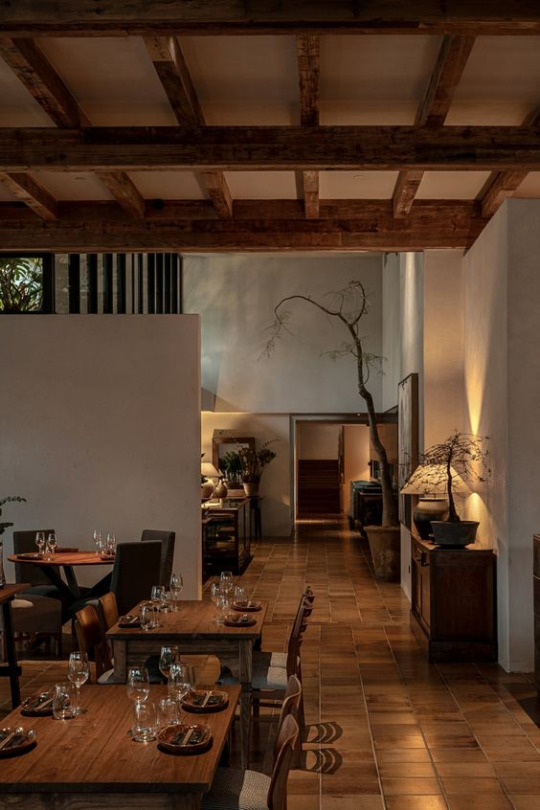
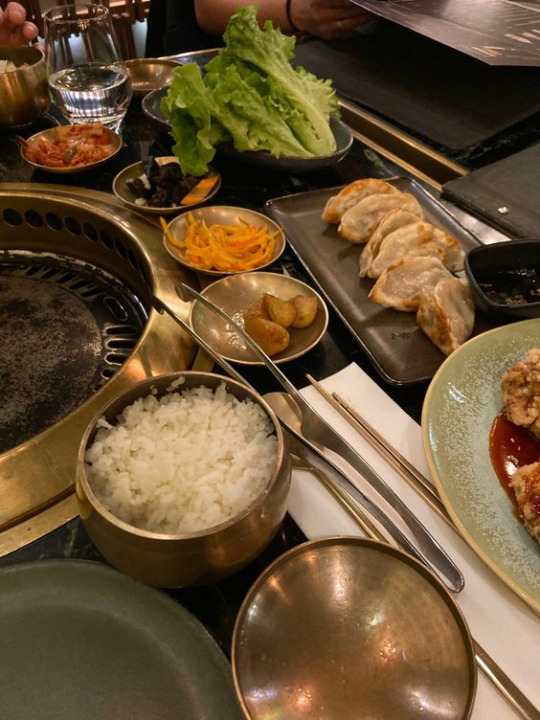
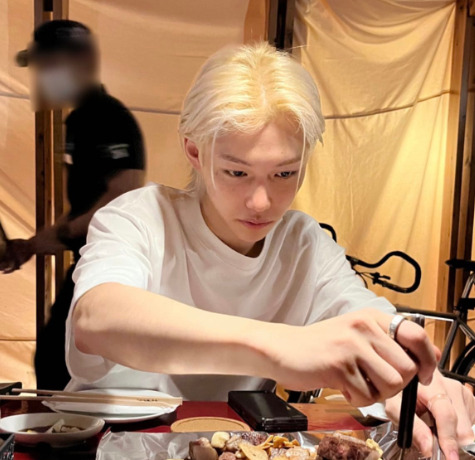
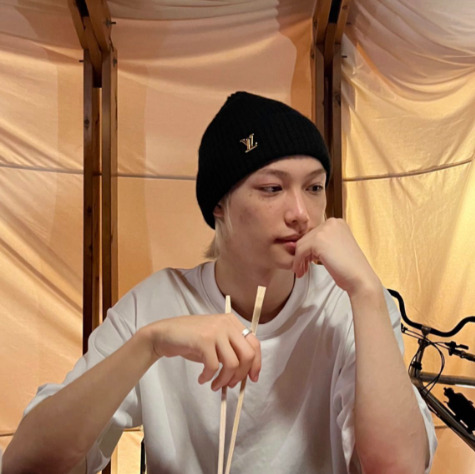
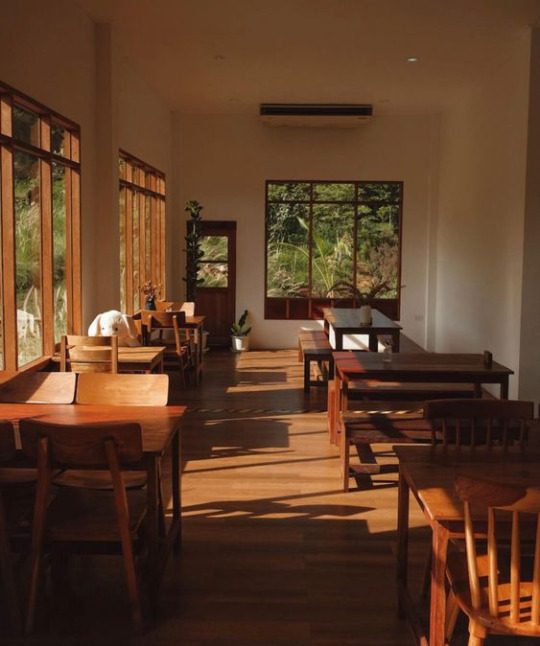

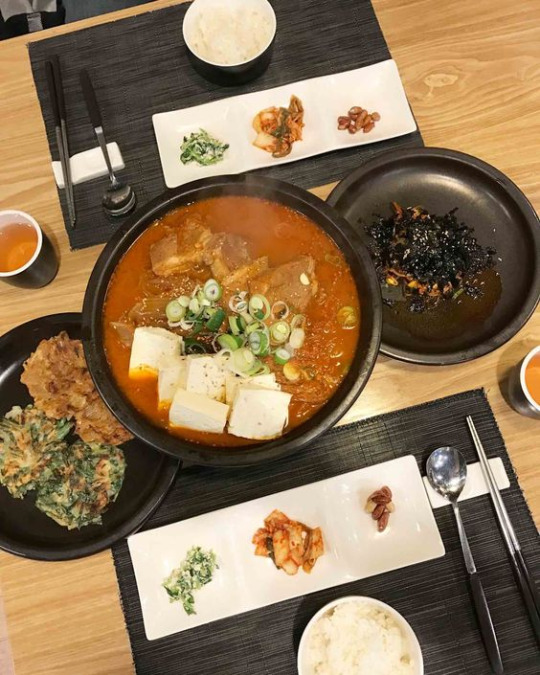
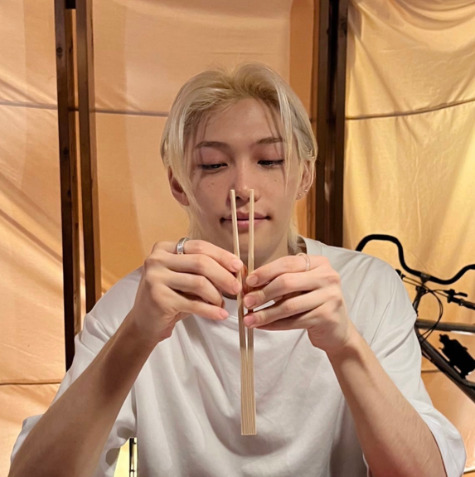
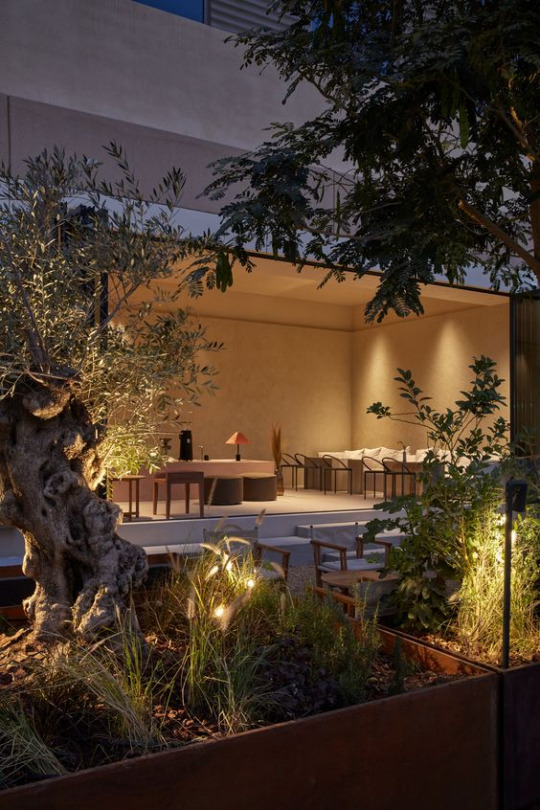
야, 먹자!
#moodboard#layout#felix moodboard#stray kids moodboard#warm#traditional#korean food#yellow#stray kids#lee felix#korean moodboard#whitenoiseclub
81 notes
·
View notes
Text
Existing in this world with the current political climate means kinda wanting to partake in the around the world Hatsune Miku trend but wondering if I'll be fucking crucified for Russian Miku
#and no I'm not overreacting. trust me I have seen some shit#technically I could make her Moldovan or Korean or uzbek and those would all be accurate too#but my extent of connection to any of that is going over to my auntie's for korean/uzbek food every once in a while#I'm russian to the core whether the world likes it or not#(it doesn't. it really doesn't. and that's not a victim complex it's an object fact)#anyway. I already saved some refs of traditional ural settler clothing so it'd be a shame not to do anything with it#kinda wanna do a modern version too. but there's not really a look modern russians have#we just dress in whatever#LMAO IMAGINE IF I DID SOVIET MIKU I'D BE SO FUCKING DEAD#NOW I WANNA DO IT JUST FOR THE DRAMA#hatsune miku#<— playing with fire by putting this in the tag
11 notes
·
View notes
Text
Korean Holidays in Spring 🌼
Note (Another note from me, the team member responsible for posting our stuff on tumblr): So, it's basically summer in Korea these days (very hot and sunny!) and this may seem out of the blue... We planned this post when it was spring, but real life (a.k.a college assignments) delayed our schedule a bit. We still hope you enjoy our post about holidays in Spring. Here's the link to our instagram post as usual(part 1, part 2).


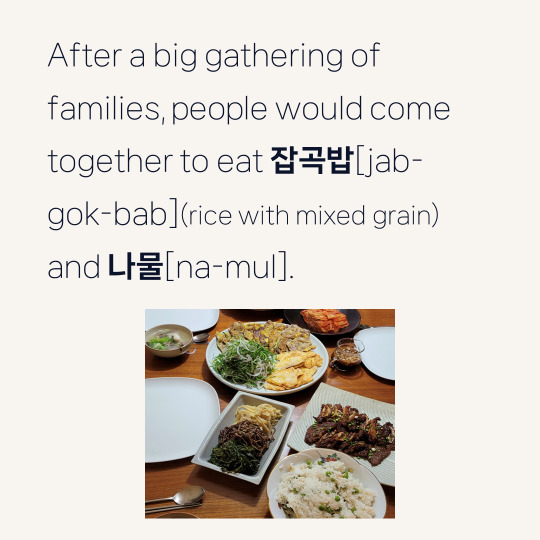
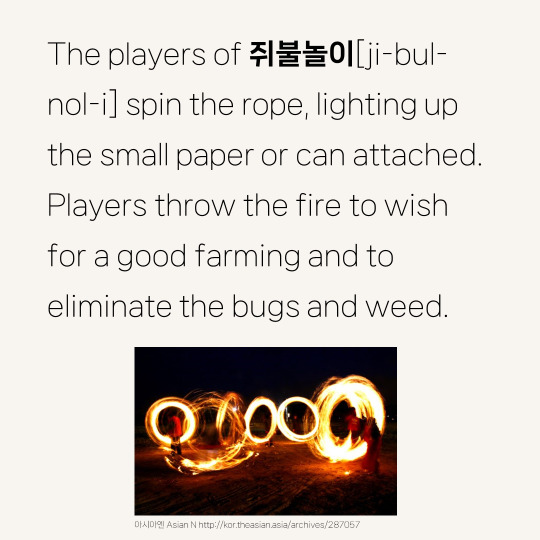
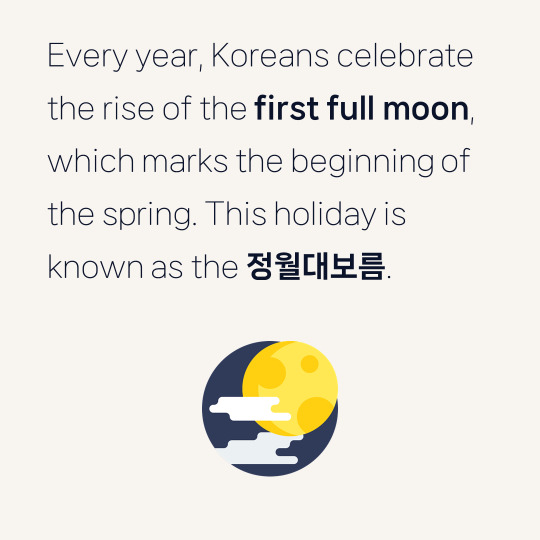
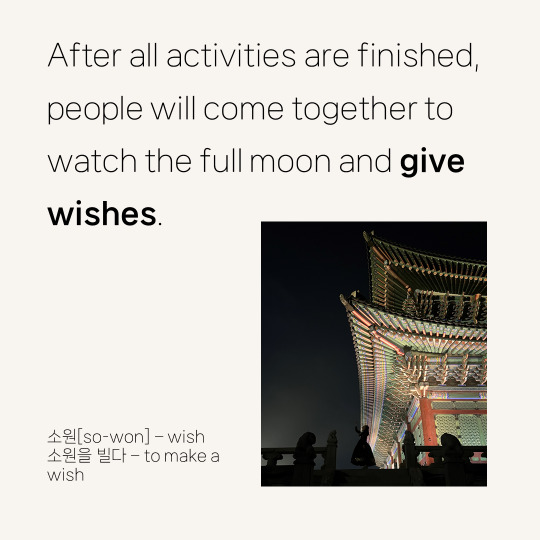

Just less than a century ago, almost every individual in Korea were farmers. Even in the 1960s, more than half of the total population grew crops for living. If we count from the days of Dangun (단군, the mythical founder of Korea), for more than 4000 years, the people of Korea were largely committed to farming.
In a society where farming is central to the community, the weather and the seasons hold great importance. Really, because if there is a storm or an extreme raining season, that would mean that the crops will be ruined that year, leading to a year of celebration. Thus spring, which marks the beginning of the year and also the beginning of the planting season, was full of traditional celebrations which wished for a good year and the blessing of the ancestors. This post will further investigate the traditional spring holidays of Korea and its unique customs which were set to celebrate such comings of life.
Seolnal [설날], also known as the Lunar New Year and Chinese new year, marks the beginning of the new year and celebrates the rise of the first moon. Now when the first moon rises, it appears as a very small crescent figure. After 15 days, it becomes the full moon. On this first full moon of the year, the jong-wol-dae-borum[정월대보름](hereon referred to as jeong-wol)holiday is celebrated. In the very early morning of the jeong-wol, families celebrate the day by eating bu-rom[부럼], which is a set of hard nuts such as peanuts, walnuts and chestnuts. By putting the hard nut in your mouth and purposefully breaking it with your teeth, you wish for good luck. More specifically, you wish for no bad luck this year.
This bu-rom breaking tradition stems from a homophonic term with bu-rom: bu-se-rom[부스럼]. Bu-se-rom refers to little pimples, thus by breaking the bu-roms, referring to bad luck in general, the people wished to have a healthy body in the new years which is essential for harvest. Traditionally, people would eat jabgok- bab[잡곡밥], which is rice cooked with nuts, with the na-mul[나물](seasoned spring herbs)s together.

(A picture from our family dinner in the new years week, which features the additional servings of jabgokbab, namul, and other traditional dishes)
During the middays, people went around each family’s houses and farms, each carrying traditional celebrations. Ji-bul- nori[쥐불놀이] was a ceremony of intentionally setting fire to the farmland. Attaching a small paper or a can to a long rope, the players of jibulnori would hold the end of the rope and spin it, while lighting up the small paper or can attached. After spinning the rope a few times, the player would throw the fire inside the land. The fire was thrown in not only to wish for good farming but also to eliminate the bugs and the weeds that have grown over the winter. The community came together and later played yut-no-ri[윷놀이] and many other activities.
After spending the day together families would gather and watch the first full moon rise together. People usually granted wishes, and they also predicted the outcome of the farming through the shape of the moon as well.
Due to the development and industrialization of Korea in the last few decades, however, many of the traditional celebrations have been reduced in its size and significance. Nevertheless, the core traditions remain and many rural parts of Korea still celebrate such traditions.
Thanks for staying with us and we hope you have enjoyed your five minute reading with us.
#korea#learn korean#study Korean#Korean vocab#Korean holidays#Korean culture#Living in Korea#Korean food#Korean tradition#한국#한국어
6 notes
·
View notes
Text
This is your reminder to celebrate the silly seeming holiday you made up for yourself. My holiday is called “Sky Castle Day” in homage to the first Korean drama that I ever watched. I eat Korean Food and watch the first episode of the first Korean drama that I loved in remembrance of my initial love of the language. This year is year 3, and my mom joined me. We went out for Korean food and she watched the episode with me. It’s a beautiful holiday that makes me happy and that my mom enjoyed with me. It was fun, no one got hurt, and it made me happy. Enjoy your traditions! They are important!
#mun post#outofguard#k drama#sky castle#sky castle day#Korean food#holiday#holidays#tradition#traditions
8 notes
·
View notes
Text

Let's check out some best Korean traditional food
Kimchi: The Heart and Soul of Korean Cuisine
It would be impossible to discuss Korean cuisine without discussing kimchi. This traditional Korean food has a history extending back more than 2,000 years to the Shilla Dynasty. People usually use cabbage or radishes for kimchi. All the ingredients are usually seasoned with salt, chili pepper flakes, garlic, ginger, and other herbs and spices. The end result is a dish that Koreans adore with every meal because it is sour, hot, and pungent. Due to its probiotic nature, kimchi is not only delicious but also has several health advantages.
Korean Fried Chicken: The Crispy Delight of Traditional Korean Food
Korean fried chicken recreates the classic American fast food in its own special way. Unlike its American equivalents, double-fry the chicken in vegetable oil before covering it in a sweet-spicy sauce. As a result, the inside of the meat is extremely moist. And the lightly battered skin is crispy and low in fat. Korean Fried Chicken is a famous late-night treat with beer.
Tteokbokki- Red Rice Cakes
Tteokbokki is a beloved traditional Korean food that has become a popular street food dish across the country. It features chewy rice cakes, known as tteok, cooked in a spicy sauce, creating a flavorful and satisfying meal. Tteokbokki is known for its unique combination of heat, sweetness, and umami flavors.
#korean tradition#Korean food#Jeju Dongmun Traditional Market 동문재래시장#traditions#korean food#korea food#korea guide#korea lifestyle#korea eats#korean vlog#korean blog#korean#kimchi#tteokbokki#rice cakes
7 notes
·
View notes
Text



Cute girl
#fanart#drawing#illustration#sketch#digital art#digital illustration#sketchbook#traditional art#aesthetic#digital doodle#buldak#ramen#spicy ramen#south korea#korean#korea food
3 notes
·
View notes
Text
Sigeumchi-Namul/Korean-seasoned Spinach is so damn good and I really need to just start making some and leaving it in the fridge to eat through the week, cause it's so low-spoon and keeps well and is delicious cold~
Just blanch some spinach (boil for 30s-1m minutes then rinse in ice cold water or run under cold water tap), press the excess water out of it (either squeeze it with your hands or find some good weight to press it with. I'm thinking leave the spinch in a strainer in the sink and put a glass bowl full of water on top of it but i haven't tried yet). You might want to bunch it into a cube and chop it a few times (the amount of chops depending on how big a batch you've cooked).
Then season it with soy sauce (or coconut aminos and maybe add salt if soy-free), toasted sesame oil, toasted sesame seeds, minced garlic, chopped green onion, and, optionally, add some gochugaru (Korean red pepper flakes) or silgochu (shredded Korean red pepper) if you want some heat. Even regular black pepper is good in it if you don't like the spicy pepper heat.
I haven't tried, but it probably works well with frozen spinach too, just thaw it according to directions and then season as above. Probably takes longer to thaw than cook, but easier on clean up that way.
The amount of seasoning will depend on how big a batch you make, but start low then add more. Sesame oil is strongly flavored so start with a tsp. Maybe about .25 more soy sauce than sesame oil, but your taste will vary. It should taste nutty from the sesame oil and a bit salty.
#low spoon recipe#low spoon cooking#I was just reminded of this dish and then realized the low spoon cooking blogs i was following haven't posted in a long time so...#Putting it here instead of submitting it lol#And ffs no teenage white girls telling me I'm calling Korean food wrong like the one that said kimchi can only be cabbage PLEASE#I'm still annoyed with them. The caucasity of it all#(Yeah i know I'm white too but my husband is Korean my MIL worked at a traditional restaurant owned by her sister in seoul)#(If she says cucumber kimchi is kimchi then it's fucking kimchi. You can buy radish kimchi at uwajimaya. Kimchi just means pickled veg)#(I know this recipe isn't for kimchi but just in case they try to say the same thing about namul... which can be many different veg not jus#spinach... namul is just a type of seasoned veg banchan/side dish. I think it was watercress namul last time we visited her)#(She's made it out of wild greens she's picked before it was one of the first things i ever ate that she made and it was so damn good)#(I bet you could make it out of like. Dandelion greens if you wanted.)
12 notes
·
View notes
Text








2 notes
·
View notes
Text
Hello! Nice to meet you
We are conducting a survey on school assignments. Can you participate?
(This survey will only be used to create assignments) (We used a translator. I apologize if there is a misinterpretation.)
-----Link-----
https://forms.gle/juaJsiJJnjAMa3Qv7
10 notes
·
View notes
Text

If you're ever in Cork, Ireland I recommend stopping by the Marina Market for food and trinkets ^_^
The coffee cup says "Nollaig Shona Duit" which means Merry Christmas in Irish. Super cute design and amazing coffee - they have a shop in the city too: Alchemy Coffee.
#had a great day with friends yesterday#we tend to prefer Asian food#so one friend got Korean fried tofu#the other got bulgogi tacos#and i got deep fried veggies and hosomaki#but they have everything#i just don't like traditional irish food much lol#misc: photo#ireland#cork ireland#marina market
5 notes
·
View notes
Text

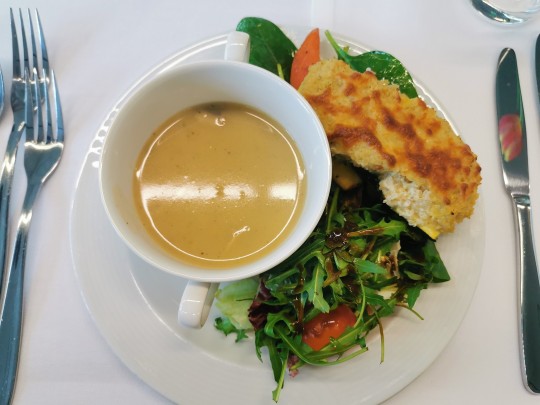

great food i had in vienna!
(sundubu jjigae,
mushroom soup and salad,
black mushroom ramen)
#food#also had more 'traditional' austrian food but took horrible pics#the korean restaurant was so nice!!#japanese cuisine#korean cuisine#vienna
8 notes
·
View notes
Photo

Mayo Comics #14: Sriracha Mayo
Can you believe someone came up with at least 14 hilarious mayonnaise jokes?
Posted using PostyBirb
#mayo#sriracha#korean#korea#comics#comic#webcomic#webcomics#traditional art#sriracha mayo#food#mayonnaise#my art
2 notes
·
View notes
Text
Love going to an American diner run by an elderly Korean couple employing mostly Spanish speaking Latin people. I feel a little closer to humanity.
#the food is a mix of classic American diner stuff#and traditional Korean dishes#it’s great#personal
2 notes
·
View notes
Text
Responsible Ways to Savor the Best Korean Dishes

Korean cuisine is renowned for its rich flavors, wholesome ingredients, and deep cultural significance. From the tangy zest of kimchi to the hearty satisfaction of bibimbap, each dish reflects generations of tradition and culinary artistry. Whether you're savoring authentic street food or a steaming bowl of ramen, it's important to approach Korean food with respect and mindfulness.
Ethical dining involves supporting genuine Korean restaurants, opting for sustainable ingredients, and valuing traditional cooking techniques. If you're searching for the best Korean cuisine near you, here’s how you can enjoy these flavorful dishes while honoring their heritage and authenticity.
1. Choose Authentic and Ethical Restaurants
To truly enjoy the best Korean food, it's important to dine at authentic Korean restaurants that focus on quality and sustainability. Many Korean eateries and kimchi restaurants use fresh, high-quality ingredients while supporting local farmers and ethical food practices.
When looking for “Korean places near me,” choose restaurants that value fair wages, reduce food waste, and follow eco-friendly methods. Authentic spots stick to traditional recipes, ensuring you experience the real taste of Korean cuisine while dining responsibly.
By supporting these restaurants, you help preserve Korean food culture and promote sustainability. Whether you’re enjoying kimchi, bibimbap, or Korean BBQ, choosing the right place makes your meal more meaningful and environmentally friendly.
Top 5 Must-Visit Tourist Spots Near Wang House Laxmi Nagar! CLICK HERE TO KNOW MORE.
2. Support Local and Ethical Korean Stores
If you enjoy cooking Korean food at home, shopping at a local Korean store is a great way to find authentic ingredients while supporting ethical businesses. These stores offer essentials like fermented kimchi, gochujang (Korean chili paste), organic spices, and high-quality rice.
Choosing stores that sell organic and responsibly sourced ingredients not only enhances the flavor of your dishes but also promotes sustainability. Ethical sourcing helps reduce environmental impact and supports fair trade practices.
When shopping for Korean ingredients, look for locally-owned stores that prioritize traditional methods and eco-friendly packaging. By supporting ethical Korean stores, you help preserve authentic flavors while making a positive impact on the food industry and the planet.
3. Try Plant-Based Korean Dishes
Korean cuisine has a wide range of delicious vegetarian dishes that are both flavorful and eco-friendly. Whether you're exploring traditional Korean food or trying out new Korean dinner options, adding plant-based meals to your diet is a great way to enjoy authentic flavors while being mindful of the environment.
Many Korean dishes naturally focus on vegetables, tofu, and fermented ingredients, making them a healthy and sustainable choice. Some must-try vegetarian Korean dishes include kimbap (seaweed rice rolls), japchae (stir-fried glass noodles with vegetables), and doenjang jjigae (soybean paste stew).
These dishes showcase Korea’s rich culinary heritage while providing a nutritious and ethical alternative. The next time you search for "Korean cuisine near me," consider trying a plant-based meal for a delicious and sustainable dining experience.
Why Vegetable Ramen is a Must-Try for Fans? CLICK HERE TO KNOW MORE.
4. Be Mindful When Ordering Seafood and Meat
When enjoying South Korean cuisine, it's important to be aware of where your meat and seafood come from. Popular dishes like bulgogi (marinated beef) and samgyeopsal (grilled pork belly) are best enjoyed when made with high-quality ingredients.
To eat responsibly, choose restaurants that use free-range meat and sustainably sourced seafood. When looking for good Korean food, check if the restaurant partners with ethical suppliers who follow humane farming practices and avoid overfishing.
Supporting such restaurants not only improves your dining experience but also helps protect the environment. Whether you're enjoying Korean BBQ or a seafood hotpot, making mindful choices ensures you respect both Korean culinary traditions and sustainability.
5. Learn the Cultural Significance of Each Dish
To truly appreciate Korean food, it's important to understand its cultural history. Many traditional Korean dishes have been passed down for generations, reflecting the country’s heritage and communal dining traditions.
If you're exploring a list of Korean dishes, take a moment to learn about their origins. For example, kimchi is more than just a side dish—it represents preservation, resilience, and community in South Korean cuisine. Similarly, Tteokbokki (spicy rice cakes) and bibimbap (mixed rice with vegetables) hold historical and regional significance.
By learning the stories behind each dish, you can develop a deeper appreciation for Korean cuisine and its rich cultural value.
How Are Korean Festivals Celebrated in India? CLICK HERE TO KNOW MORE.
6. Reduce Food Waste
Food waste is a major global issue, but you can help reduce it by being mindful of portion sizes. Whether you're dining at a Korean cafe or cooking at home, try to order or prepare only what you can finish.
Many Korean dishes, like bibimbap (mixed rice) and banchan (side dishes), are designed to use leftover ingredients efficiently, making them both practical and eco-friendly. When eating at a Korean restaurant, consider sharing dishes to prevent waste or ask for smaller portions if you're unsure.
At home, you can use leftover vegetables or meats in dishes like kimchi jjigae (kimchi stew) or japchae (stir-fried noodles) to create delicious meals with minimal waste. Being mindful of food waste not only helps the environment but also respects the resourceful nature of Korean cooking.
7. Enjoy Korean Food While Supporting the Community
Connecting with the community can make your Korean dining experience even more special. Many Korean restaurants host cultural events, cooking classes, and traditional music nights, giving you a chance to immerse yourself in the culture while enjoying delicious food.
If you're a K-pop fan, visiting restaurants that play Korean music or feature live performances can make your meal even more enjoyable. By choosing community-focused restaurants, you not only get to taste authentic Korean dishes but also help preserve Korean traditions.
These events offer a great way to learn more about Korean culture, discover new dishes, and meet other food lovers. Supporting local Korean food businesses helps keep the culture alive while creating a more meaningful dining experience.
8. Pair Your Meal with Korean Music and Culture
For K-pop fans and music lovers, dining at a restaurant that embraces Korean music culture can make the experience even more enjoyable. Many Korean restaurants play K-pop hits or host live performances, creating a lively atmosphere that perfectly complements the flavors of your meal.
Visiting a K-pop-themed restaurant adds a fun cultural element, allowing you to enjoy both delicious Korean dishes and the energetic beats of your favorite artists. Whether you're savoring bibimbap or kimchi, the right music can enhance your dining experience and deepen your connection to Korean culture.
9. Opt for Homemade Korean Noodles
If you're craving Korean noodles, consider trying fresh, handmade versions from authentic Korean restaurants or making them at home. Unlike instant noodles, which often contain additives, homemade noodles offer a healthier and more flavorful option.
You can visit a local Korean store to find authentic ingredients for classic noodle dishes like jajangmyeon (black bean noodles) or ramyeon. Making these dishes from scratch not only enhances their taste but also allows you to experience the traditional way of preparing Korean food. Choosing fresh, homemade noodles is a delicious and sustainable way to enjoy Korean cuisine.
How are K-pop stars spreading K-food? CLICK HERE TO KNOW MORE.
10. Experience Korean Festivals and Food Events
Korean food festivals are a great way to try iconic dishes while learning about sustainable eating practices. These events often focus on eco-friendly dining and feature Korean delicacies made using traditional methods and responsibly sourced ingredients.
From kimchi-making workshops to live cooking demonstrations, you can dive into the history of Korean cuisine and see how it has embraced sustainability over time. Attending these festivals lets you taste a variety of authentic dishes and gain a deeper understanding of the cultural significance of food in Korea.
By supporting these events, you promote ethical food practices while enjoying an unforgettable experience that celebrates both Korean culture and sustainability.
Conclusion
Enjoying the best Korean food can be a rewarding experience when done ethically and responsibly. By choosing sustainable restaurants, supporting local stores for authentic ingredients, and trying plant-based Korean dishes, you not only enjoy amazing flavors but also contribute to the environment and the community. Understanding the cultural significance of each dish and reducing food waste adds even more value to your dining experience.
Whether you're a K-pop fan, love Korean music, or simply enjoy Korean food, making mindful choices enhances your culinary adventure. So, the next time you're searching for Korean cuisine nearby, opt for places that prioritize authenticity, sustainability, and ethical dining. Whether you're visiting a Korean cafe, a lively restaurant, or cooking at home, choosing ethical options ensures that every meal is both delicious and meaningful.
#Korean food#ethical dining#sustainable restaurants#authentic Korean cuisine#plant-based Korean dishes#Korean food culture#Korean food festivals#local Korean stores#homemade Korean noodles#Korean food near me#K-pop dining#Korean food sustainability#ethical food practices#Korean dishes#traditional Korean cooking#Korean community#food waste reduction#Korean food events#eco-friendly dining#Korean ingredients#Korean cuisine authenticity
0 notes